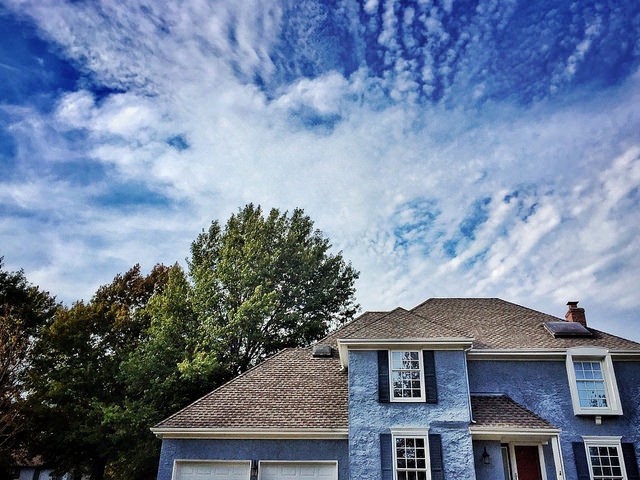If you spend any time reading about real estate, you know that there has been a lot of discussion recently about inventory and first-time home buyers. Specifically, there are fewer homes available for sale and fewer first-time home buyers active in the market than is considered typical. Of course, there are many reasons that both of these things are true. Among them, slower-than-normal new home construction, student loan debt, and rising rent all play a role. But, according to a recent analysis from Zillow, there’s another reason that there are fewer homes on the market and fewer young people buying. According to the analysis, many of the affordable homes that would typically sell to first-time buyers were purchased by investors after home prices plummeted following the housing crash. These houses were then converted into rental properties. This, combined with rising demand for single-family rentals, has led to a six percent increase in the number of single-family homes rented out between 2007 and 2016. In short, there are fewer affordable homes to buy in many markets because those homes are currently being occupied as rental units. More here.
Try these ideas to get organized at home one small step at a time
Mortgage Misconceptions May Keep Buyers Away
Potential home buyers often describe the home buying process as being complicated. And, most likely, a lot of their confusion stems from the financing side of the transaction. A lack of knowledge about what is required and how to proceed can cause otherwise qualified borrowers to become intimidated and even delay their dreams of homeownership. For example, prospective buyers often have misconceptions about down payment requirements, believing they are required to put down much more than is actually necessary. And, though calculating the size of your down payment depends on a number of factors, believing that you can’t buy a house with less than a 20 percent down payment can be enough to convince a potential home buyer that they aren’t yet ready to buy. That’s why it’s important to contact your lender to explore your options before you talk yourself out of buying. Though there is plenty of information available online – and recent research shows the internet is the primary source of information about mortgages – you can’t get an accurate appraisal of your options and price range without the help of a qualified professional. Don’t allow misconceptions to hold you back from buying the home of your dreams. More here.
Where To Look To Eliminate Household Odors
Your sense of smell can be a peculiar thing. Odors that overwhelm some people, don’t affect others. And odors that you’re accustom to seem to disappear altogether after a while. So it’s no surprise that homeowners might worry that their home may be giving off an unpleasant scent. And, during the holidays, this becomes even more of a concern, as it’s a popular time of year to have houseguests. Fortunately, there are some fairly common places you can target to ensure that you’ve eliminated any odors that may be going undetected. One of the more obvious targets is pets. If you have animals in your home, make sure you clean their favorite places, pillows, beds, and blankets, etc. Basements and bedding are also common places for odors to linger. Mold and mildew can cause mustiness in basement areas but can also be detected by sight, which makes addressing it even easier. Be sure also to keep your bedding clean and your mattress fresh. Another obvious spot to check for odors is your refrigerator and freezer. Check that there’s no grime, grit, or leftovers lurking in the back that are emitting odors. Overall, paying some regular attention to these hot spots can help remove any worry about how your home smells to holiday house guests or, if you’re selling your home, potential buyers. More here.
Get Top Dollar!!
Despite Price Spike, No Evidence Of Housing Bubble
Along with rising home prices, there has also been increasing concern that the housing market may be entering a bubble. And that’s not surprising, considering the housing crash is still fresh in peoples’ memories. So as home prices reach or exceed previous highs, potential buyers and current homeowners are naturally concerned about the possibility of another housing bubble and crash. According to a recent analysis from Freddie Mac, however, there is a pretty good reason to doubt that today’s price spikes are, in fact, evidence of an emerging bubble. Put simply, one of the primary reasons bubbles form is a perception that home prices will always rise. This causes investors to bid prices up and some mortgage lenders to offer easier credit. In short, a bubble isn’t real. Today’s price increases, on the other hand, are being driven by a lack of for-sale inventory and slower-than-normal new home construction. That means, it is more likely that prices aren’t being driven upward by irrational confidence but, instead, are being driven by an unbalanced market. “The evidence indicates there currently is no house price bubble in the U.S., despite the rapid increase of house prices over the last five years,” Freddie Mac’s chief economist Sean Becketti said. “However, the housing sector is significantly out of balance.” More here.

Housing Sentiment Cools Heading Into Fall
There are many reasons autumn is a good time to buy a house. But, because spring and summer are traditionally seen as the best seasons for home shoppers, the housing market often cools in the months following its busiest season. Evidence of this can be found in Fannie Mae’s most recent Home Purchase Sentiment Index. The index – which asks Americans for their feelings about buying and selling homes, mortgage rates, home prices, etc. – reached an all-time high in September but saw a decline in October. In short, fewer Americans feel now is a good time to buy or sell a house. But that’s normal, according to Fannie Mae’s chief economist, Doug Duncan. “The modest decrease in October’s Home Purchase Sentiment Index is driven in large part by decreases in favorable views of the current home-buying and home-selling climates, a shift we expect at this time of year moving out of the summer home-buying season,” Duncan said. “Indicators of broader economic and personal financial sentiment remain relatively steady.” In other words, because Americans generally feel better about their economic security, the dip in sentiment is likely to be temporary. More here.

How To Think About Your Budget When Buying
New Home Sales Up 30% Over Last Year
New Home Sales Up 30% Over Last Year
In September, new home sales were 29.8 percent higher than they were at the same time last year, according to new numbers from the U.S. Census Bureau and the Department of Housing and Urban Development. The data shows sales up 3.1 percent from the month before and at their second-highest level since the recovery began. That’s good news for the housing market because any increase in new home sales helps spur more new home construction, which raises for-sale inventory and moderates price increases on all homes up for sale. As it is, the median price of a new home sold in September was $313,500; the average sales price was $377,700. And, with the number of new homes for sale lower than the month before, prices will likely continue to rise in the near term. Still a more favorable labor market and low mortgage rates have helped balance higher prices and kept buyer demand high. As an example, economists and analysts predicted a sales decline for September, making the results both unexpected and a good indication that potential home buyers aren’t being deterred by higher prices. More here.


